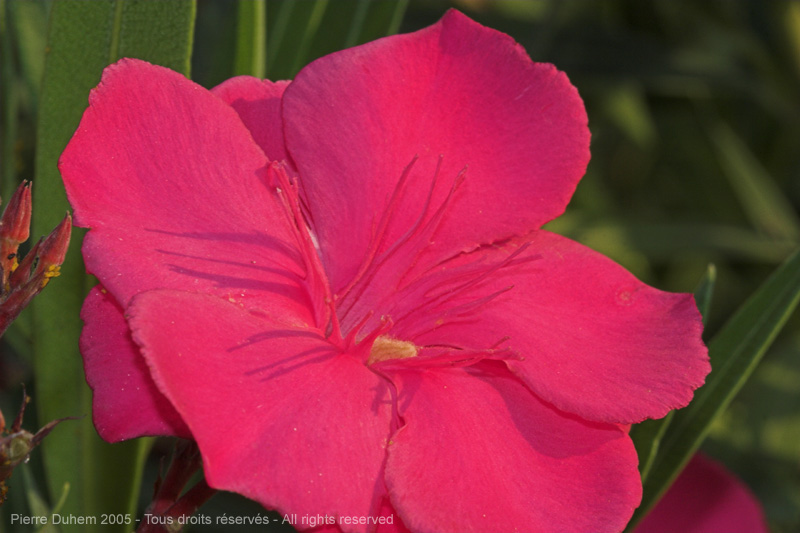

Oleander

In Sossano (Italy, Vicenza region), a beautiful oleander (Nerium oleander)
stood in the middle of the heavily watered lawn and produced
tender leaves and young sprouts which attracted numerous insects...
stood in the middle of the heavily watered lawn and produced
tender leaves and young sprouts which attracted numerous insects...
Click below on the thumbnails to display a bigger picture.
Click again on the picture to come back.
Click again on the picture to come back.
Leaves and sprouts were heavily attacked by yellow aphids (Aphis nerii, also called Yellow Oleander Aphid).
With such an abundant food resource, predators are never very far away. A green lacewing (Chrysoperla sp.) had observed those preys and laid its eggs at the end of long silken stalks, a characteristic of this genus.
The green lacewing is sometimes called the "Aphid Lion". The larval form and the adult form both feed on aphids, and are therefore more and more used in the biological control methods. They appear to be more effective than the well known ladybeetles.
"Ladybeetles were also at work. Here, Hippodamia variegata, the spotted amber ladybird.
And here, Chilocorus bipustulatus, a small but also effective ladybeetle.
The reproduction instinct was at work. So much that sometimes they formed some curious pyramids...
We could rapidly observe groups of eggs on the lower face of leaves.
On the left, note also an aphid which was parasited by some Hymenoptera. Those aphids are adequatly called "golden mummies". On the right, latching of ladybeetle larva...
As soon as latched, they start looking for food and for aphids...
They are not alone. Below, a cecidomyid larva and a syrphid larva. Syrphid larvae can also destroy large quantities of aphids.
All this happens under the custody of ants, which chase adult ladybeetles but seem to tolerate all kinds of larvae. And they don't bother about bugs...
All pictures taken in July-August 2005.
All rights reserved.
Last update: February 2023
Questions and comments are welcome.
Back to the Feature Gallery
All rights reserved.
Last update: February 2023
Questions and comments are welcome.
Back to the Feature Gallery































